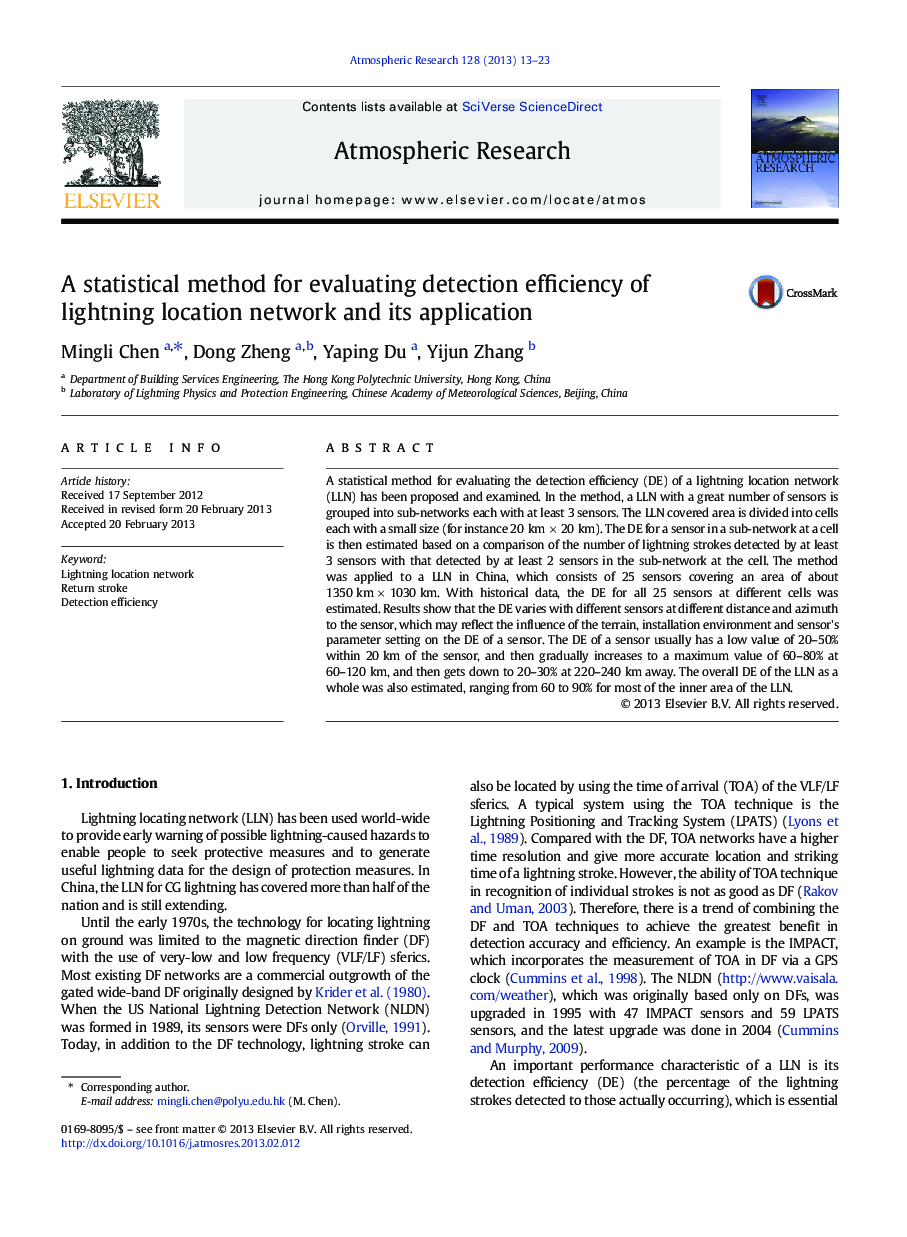| کد مقاله | کد نشریه | سال انتشار | مقاله انگلیسی | نسخه تمام متن |
|---|---|---|---|---|
| 4450020 | 1620539 | 2013 | 11 صفحه PDF | دانلود رایگان |

• A statistical method for evaluation of detection efficiency (DE) of a lightning location network (LLN) was proposed and validated.
• The method needs only to process historical data and can provide spatial distributions of DE for each sensor in a LLN.
• The method was applied to a 25-sensor LLN in China and the DE was found to vary with sensors and geographic locations.
• The DE usually has a low value of 20–50% within 20 km or 200 km away and a high value of 60–80% at 60–140 km.
• The DE variations might partially due to the influence from the terrains and the sensor’s installation environments.
A statistical method for evaluating the detection efficiency (DE) of a lightning location network (LLN) has been proposed and examined. In the method, a LLN with a great number of sensors is grouped into sub-networks each with at least 3 sensors. The LLN covered area is divided into cells each with a small size (for instance 20 km × 20 km). The DE for a sensor in a sub-network at a cell is then estimated based on a comparison of the number of lightning strokes detected by at least 3 sensors with that detected by at least 2 sensors in the sub-network at the cell. The method was applied to a LLN in China, which consists of 25 sensors covering an area of about 1350 km × 1030 km. With historical data, the DE for all 25 sensors at different cells was estimated. Results show that the DE varies with different sensors at different distance and azimuth to the sensor, which may reflect the influence of the terrain, installation environment and sensor's parameter setting on the DE of a sensor. The DE of a sensor usually has a low value of 20–50% within 20 km of the sensor, and then gradually increases to a maximum value of 60–80% at 60–120 km, and then gets down to 20–30% at 220–240 km away. The overall DE of the LLN as a whole was also estimated, ranging from 60 to 90% for most of the inner area of the LLN.
Journal: Atmospheric Research - Volume 128, 1 July 2013, Pages 13–23